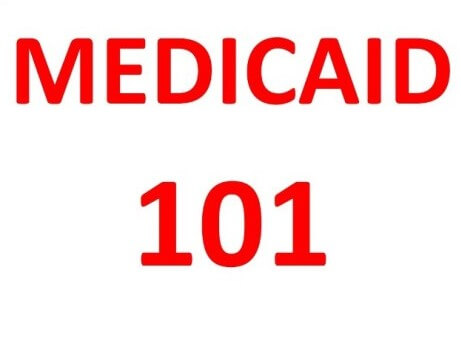
Medicaid 101: Part 1 – What Are Medicare and Medicaid?
February 1, 2018
Medicaid 101: Part 3 – Medicaid PASSPORT Program
February 15, 2018Part 1 of this Medicaid blog series generally discussed the Medicaid program and its eligibility requirements. Those requirements apply to individuals seeking Medicaid benefits in the nursing home. Those same requirements also apply to individuals seeking coverage of their assisted living services, but the Medicaid Assisted Living Waiver program has some additional requirements.
First, let’s distinguish a nursing home from an assisted living facility.
Nursing Home vs. Assisted Living Facility
Nursing homes serve individuals needing more medical services than are available through home care or other options. The services offered by nursing homes are often characterized as “skilled nursing services” and require the assistance of a nurse or similarly-qualified healthcare professional.
Assisted living, on the other hand, is more “home-like” and the services provided are often characterized as “personal support services.” These services vary, but can include housekeeping, laundry, transportation, meal services, bathing, personal hygiene, etc. The level of skill required for assisted living services is usually less than the skilled services provided by a nursing home.
Typically, assisted living facilities are less expensive and less restrictive than nursing homes.
Nursing homes charge a flat rate per day, which may vary slightly depending on the supplemental personal services provided (like haircuts). Assisted living facilities often charge a flat room and board rate, and the remaining bill for the month depends on the services provided.
Assisted Living Waiver – universal requirements
As with the nursing home program, an individual must meet the following criteria to be eligible for the Assisted Living Waiver program:
- At least an intermediate level of care (assistance with at least two of the following: bathing, grooming, toileting, dressing, eating, mobility)
- Countable assets of $2,000 or less for a single individual, or meet the asset requirement for a married couple (See Part 6)
- Gross income of $2,250 or less (or have a Qualified Income Trust – See Part 4)
Assisted Living Waiver – additional requirements
First, for an individual to qualify for the Assisted Living Waiver program, he or she must be able to safely reside in the facility. If he or she needs skilled care, it must be on a part-time or intermittent basis. If the individual needs more skilled care, he or she will not qualify for the Assisted Living Waiver program based on the principle that he or she should be living in a nursing home.
A big difference between the Medicaid nursing home and assisted living program is that most nursing homes across Ohio are Medicaid-certified, meaning that the facility will accept payment through the Medicaid program. On the other hand, a significantly smaller number of assisted living facilities are Medicaid-certified. Even if an assisted living facility is Medicaid-certified, there are usually additional restrictions to coverage.
A Medicaid-certified facility will have only a certain number of Medicaid-certified units. For an individual to qualify for Assisted Living Waiver benefits, he or she must be placed in one of the Medicaid-certified units.
Additionally, a Medicaid-certified assisted living facility is not required to accept a Medicaid-eligible resident. This means that even if an individual is already qualified for Medicaid (for example, through the in-home PASSPORT program – more information in Part 3) and wants to enter a Medicaid-certified assisted living facility, the facility is not required to accept the individual if his or her only way of paying for the cost of care is through the Medicaid program.
Generally, assisted living facilities in Ohio have a required private pay period. When an individual applies for admission to the assisted living facility, the facility will likely require that the individual have enough assets and income to privately pay for two to three years before the facility will accept Medicaid payment for the individual.
Assisted Living Waiver – What’s covered?
If an individual can qualify for the Assisted Living Waiver program, Medicaid will cover the cost of care at the facility. Medicaid will not pay for the individual’s room and board. Therefore, the individual must have sufficient income (or assistance from a spouse or other family member) to pay the monthly room and board charge. In 2018, the monthly room and board charge at an assisted living facility is $700. (Note: if the individual has income in excess of $700, most of it will be paid to the facility as the individual’s patient liability – see Part 4).
More information
To review a list of Medicaid-certified assisted living facilities, visit the Long-Term Care Ohio Consumer Guide. In the drop-down menu, select Assisted Living. You can further narrow your search by county or city. In the “Facility Keywords” section, type “Medicaid” into the keyword box. Your search should return Medicaid-certified assisted living facilities.
You can also visit the Ohio Department of Aging’s website for further information about the Assisted Living Waiver program.


